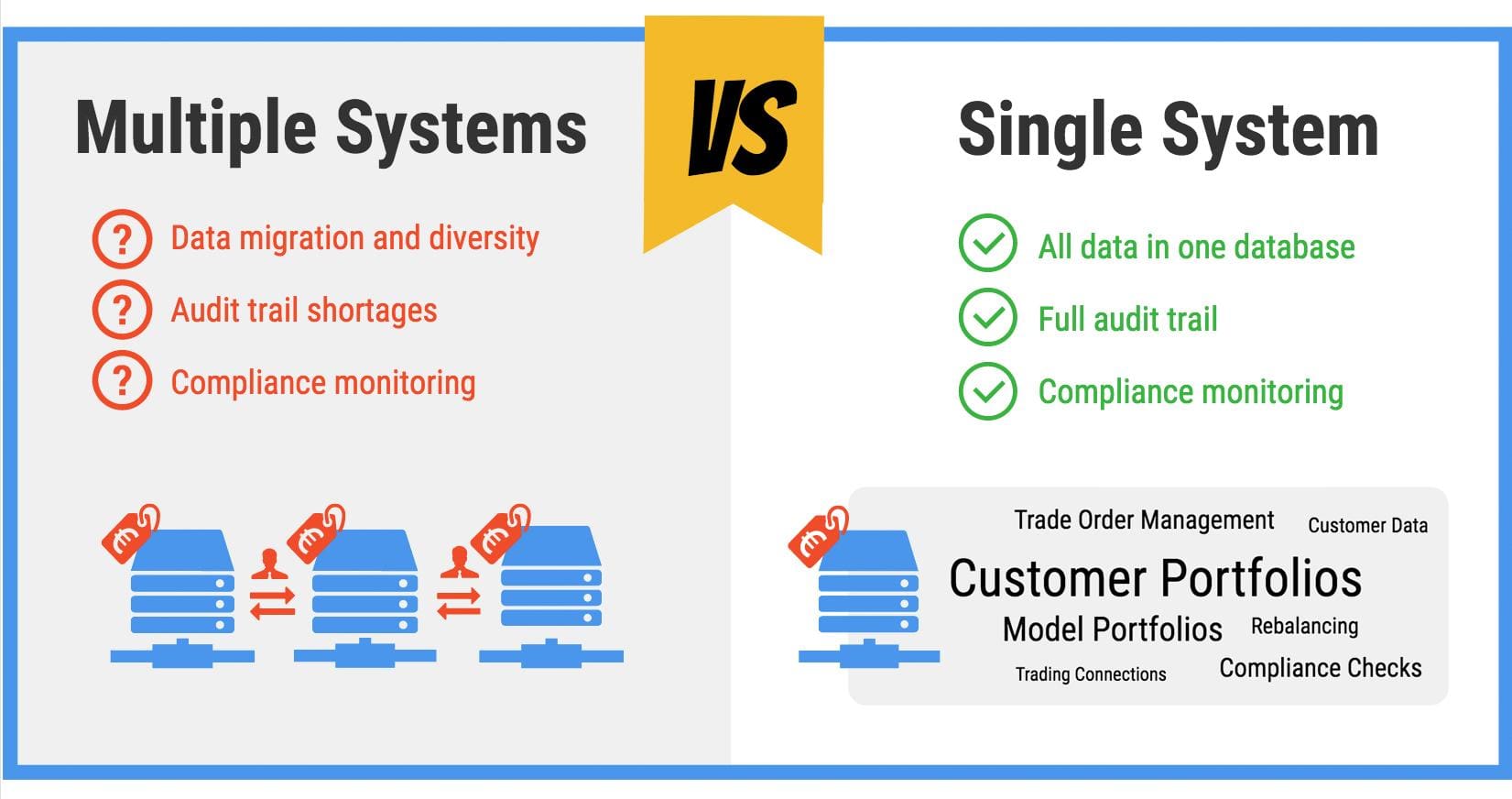Discretionary Asset Management generates benefits for investors by giving them an access to experienced and specialised Portfolio Managers, and provides a possibility for tailor made solutions. However, it does not benefit the client if it’s unnecessarily expensive or inflexible. As customer’s needs, attitudes and restrictions are always individual, a common problem for Discretionary Asset Managers is how to manage discretionary mandates efficiently. How to take care of these individual settings without being buried into manual work?
A customer relationship begins by getting to know the client and constructing the investment mandate. After this, the client’s capital must be invested based on the specific strategies defined in the mandate. The asset manager’s tasks include definition of the portfolio and its target, linking it to a model strategy, monitoring compliance, and when necessary realigning the portfolio versus its model by rebalancing. Furthermore, this is of course linked to order management and trade execution.
Managing multiple systems kills profitability
Typically the tasks described above are conducted in different systems. This division does not support efficiency for three reasons: First of all, maintaining multiple systems and integrating them generates extra costs. Second, when tasks are spread into multiple systems, automating processes and information flow is difficult. Finally, the probability of errors increases due to differences or defects between these multiple systems on the instrument, transaction or customer level. Staying compliant in the current regulatory environment is also an issue: you lack proper audit trail that covers the whole process, you are exposed to errors, and you face difficulties in following customer-specific strategies and restrictions.
Multiple different, outdated systems erode the profitability of investing. To achieve efficiency, a high level of process integration and automation is crucial. This is a problem we want to address by bringing all the aspects of managing discretionary mandates into a single system. Having everything in a single system eases process automation, reduces manual work, and ensures data accuracy. When you don’t need to maintain multiple systems and transfer data between them, you can focus on more important aspects of your business and free resources from IT. A central question that many companies should ask themselves is: Are we an IT company or an Asset Management Company?
Bringing Discretionary Asset Management into a single platform
FA enables asset managers to construct model portfolios with fixed or fluctuating content, and link these to customer portfolios. When the asset manager for example gets a drift warning for a customer portfolio, the portfolio can be automatically rebalanced against its model. Models used for automated rebalancing can be general or customer-specific investment plans. With the intelligent rebalancing logic of FA, you can rebalance multiple portfolios simultaneously, even if they are linked to different model portfolios, while respecting customer-specific strategies and restrictions. Rebalancing automatically generates the necessary buy and sell orders, which can be bulked for economies of scale and sent to a third party for execution. Trading platforms and marketplaces are easily integrated to make the information flow automatically from FA to the execution venue and vice versa.
After execution, trades are de-bulked and spread to the correct portfolios. The rebalancing process has considered customer-specific strategies and limitations, calculated necessary fees and costs, generated cost savings with trade bulking, and tracked a full audit trail of all the actions. Bringing model portfolios, rebalancing, compliance, and trade order management into a single platform saves valuable time for running your core business rather than spending it on faxing, calling and carrying out other manual and menial processes.

